medical bankruptcy
description: bankruptcy declared due to unmanageable medical bills, often in contexts where healthcare is not universally provided.
20 results
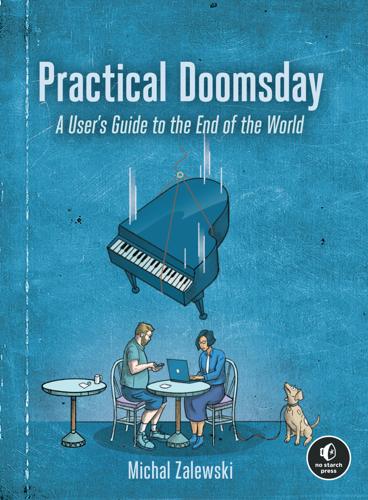
Practical Doomsday: A User's Guide to the End of the World
by
Michal Zalewski
Published 11 Jan 2022
Ruiz, “World’s Population Is Projected to Nearly Stop Growing by the End of the Century,” Pew Research Center, June 17, 2019, https://www.pewresearch.org/fact-tank/2019/06/17/worlds-population-is-projected-to-nearly-stop-growing-by-the-end-of-the-century/. Chapter 2 1. Kimberly Amadeo, “Medical Bankruptcy and the Economy,” The Balance, November 19, 2019, https://www.thebalance.com/medical-bankruptcy-statistics-4154729/. 2. Salvador Rizzo, “Sanders’s Flawed Statistic: 500,000 Medical Bankruptcies a Year,” Washington Post, August 28, 2019, https://www.washingtonpost.com/politics/2019/08/28/sanderss-flawed-statistic-medical-bankruptcies-year/. 3. Sheyna Steiner, “Survey: How Americans Contend with Unexpected Expenses,” Bankrate, January 6, 2016, https://www.bankrate.com/banking/savings/survey-how-americans-contend-with-unexpected-expenses/. 4.

Weapons of Math Destruction: How Big Data Increases Inequality and Threatens Democracy
by
Cathy O'Neil
Published 5 Sep 2016
A 2012 survey on credit card debt: Amy Traub, “Discredited: How Employment Credit Checks Keep Qualified Workers Out of a Job,” Demos, February 2013, www.demos.org/sites/default/files/publications/Discredited-Demos.pdf. the single biggest cause of bankruptcies: Christina LaMontagne, “NerdWallet Health Finds Medical Bankruptcy Accounts for Majority of Personal Bankruptcies,” NerdWallet, March 26, 2014, www.nerdwallet.com/blog/health/medical-costs/medical-bankruptcy/. white households held on average: Tami Luhby, “The Black-White Economic Divide in 5 Charts,” CNN Money, November 25, 2015, http://money.cnn.com/2015/11/24/news/economy/blacks-whites-inequality/. only 15 percent of whites: Rakesh Kochhar, Richard Fry, and Paul Taylor, “Wealth Gaps Rise to Record Highs Between Whites, Blacks, Hispanics: Twenty-to-One,” Pew Research Center, July 26, 2011, www.pewsocialtrends.org/2011/07/26/wealth-gaps-rise-to-record-highs-between-whites-blacks-hispanics/.
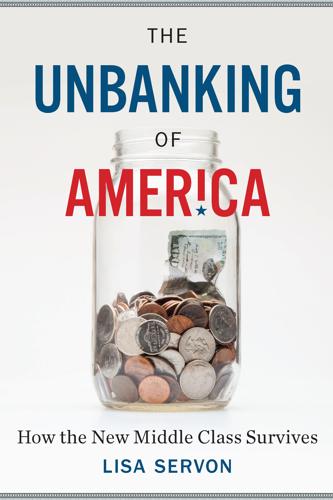
The Unbanking of America: How the New Middle Class Survives
by
Lisa Servon
Published 10 Jan 2017
By 2009, it had climbed: Index Credit Cards, “Credit Card Late Fees Average $34.09, Over-the-Limit Fees Average $36.53,” indexcreditcards.com, October 6, 2009. http://www.indexcreditcards.com/creditcardlatefees/ 69 “bring money out of the shadows”: Bari Tessler Linden, “The Antidote to Money Shame,” Bari Tessler Linden blog, November 7, 2013. http://baritessler.com/2013/11/money-shame/ “flip your rich switch”: Nan Akasha, “Money Archetypes and Guilt and Shame,” Nan Akasha blog, May 29, 2012. http://www.nanakasha.com/money-archetypes-guilt-shame rise in bankruptcy filings: Jill Lepore, “The Warren Brief,” The New Yorker, April 21, 2014. http://www.newyorker.com/magazine/2014/04/21/the-warren-brief left one partner economically: David Himmelstein et al., “Medical Bankruptcy in the United States, 2007: Results of a National Study,” American Journal of Medicine, vol. 22, no. 9 (August 2009). http://www.amjmed.com/article/S0002-9343(09)00404-5/pdf cut down on abusive: Kathleen Day, “Bankruptcy Bill Passes; Bush Expected to Sign,” Washington Post, April 15, 2005. http://www.washingtonpost.com/wp-dyn/articles/A53688-2005Apr14.html 70 claims about bankruptcy fraud: Ibid.; Lepore, “The Warren Brief.”
…
“The Surprising and Smart Reason Millennials Love Payday Loans and Prepaid Debit Cards.” Forbes, February 22, 2014. The Henry J. Kaiser Family Foundation. “Pulling It Together: The Most Popular Provision in the ACA?” Washington, DC: The Henry J. Kaiser Family Foundation, 2011. Himmelstein, David, Deborah Thorne, Elizabeth Warren, and Steffie Woolhandler. “Medical Bankruptcy in the United States, 2007: Results of a National Study.” American Journal of Medicine, vol. 22, no. 9 (2009). Huang, Daniel. “New Rules Will Change How Bank Uses Information from Reporting Agency.” Wall Street Journal, January 27, 2015. Independent Community Bankers of America. “The 2014 ICBA American Millennials and Community Banking Study.”

The New Class Conflict
by
Joel Kotkin
Published 31 Aug 2014
Hewitt, “After Obamacare,” Washington Monthly, January/February 2014, p. 39. Dan Mangan, “Medical Bills Are the Biggest Cause of U.S. Bankruptcies: Study,” CNBC.com, June 25, 2013, http://www.cnbc.com/id/100840148; Christina LaMontagne, “NerdWallet Health finds Medical Bankruptcy Accounts for Majority of Personal Bankruptcies,” NerdWallet, March 26, 2014, http://www.nerdwallet.com/blog/health/2014/03/26/medical-bankruptcy. 47. Ronald Brownstein, “Eclipsed,” National Journal, May 28, 2011, http://www.nationaljournal.com/columns/political-connections/white-working-class-americans-see-future-as-gloomy-20110526; Ronald Brownstein, “Meet the New Middle Class: Who They Are, What They Want, and What They Fear,” Atlantic, April 25, 2013, http://www.theatlantic.com/business/archive/2013/04/meet-the-new-middle-class-who-they-are-what-they-want-and-what-they-fear/275307; Phil Izzo, “Bleak News for Americans’ Income,” Wall Street Journal, October 14, 2011. 48.
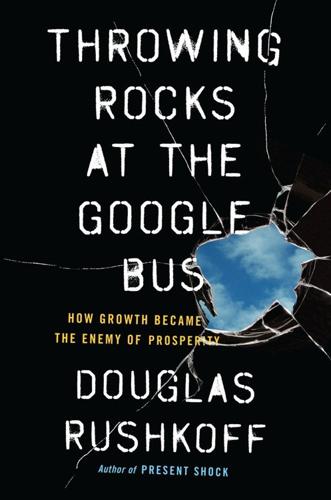
Throwing Rocks at the Google Bus: How Growth Became the Enemy of Prosperity
by
Douglas Rushkoff
Published 1 Mar 2016
David Johnston, Sam Onat Yilmaz, Jeremy Kandah, Nikos Bentenitis, Farzad Hashemi, Ron Gross, Shawn Wilkinson, and Steven Mason, “The General Theory of Decentralized Applications, Dapps,” github.com, June 9, 2014. 44. Nakamoto, “Bitcoin: A Peer-to-Peer Electronic Cash System.” 45. National Patient Advocate Foundation, “Issue Brief: Medical Debt, Medical Bankruptcy and the Impact on Patients,” npaf.org, September 2012. 46. Dan Mangan, “Medical Bills Are the Biggest Cause of US Bankruptcies: Study,” cnbc.com, June 25, 2013. 47. National Patient Advocate Foundation, “Issue Brief: Medical Debt, Medical Bankruptcy and the Impact on Patients.” 48. rollingjubilee.org. 49. Interview with Astra Taylor, cofounder of Strike Debt and the Rolling Jubilee, conducted by e-mail, July 24, 2015. 50.
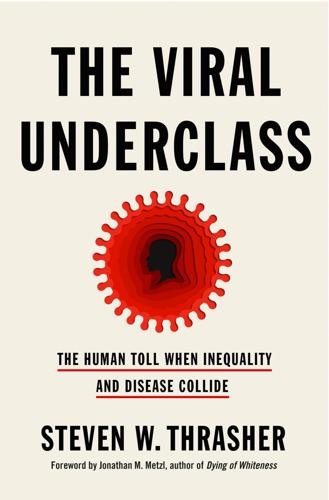
The Viral Underclass: The Human Toll When Inequality and Disease Collide
by
Steven W. Thrasher
Published 1 Aug 2022
with medical debt: Lorie Konish, “137 Million Americans Are Struggling with Medical Debts: Here’s What to Know If You Need Some Relief,” CNBC, November 10, 2019, https://www.cnbc.com/2019/11/10/americans-are-drowning-in-medical-debt-what-to-know-if-you-need-help.html. bankruptcies in the United States: Kimberly Amadeo, “Medical Bankruptcy and the Economy,” Balance, April 30, 2021, https://www.thebalance.com/medical-bankruptcy-statistics-4154729. nation on the planet: Rabah Kamal, Giorlando Ramirez, and Cynthia Cox, “How Does Health Spending in the U.S. Compare to Other Countries?” Health System Tracker, Peterson-KFF, December 23, 2020, https://www.healthsystemtracker.org/chart-collection/health-spending-u-s-compare-countries/#item-spendingcomparison_gdp-per-capita-and-health-consumption-spending-per-capita-2019.
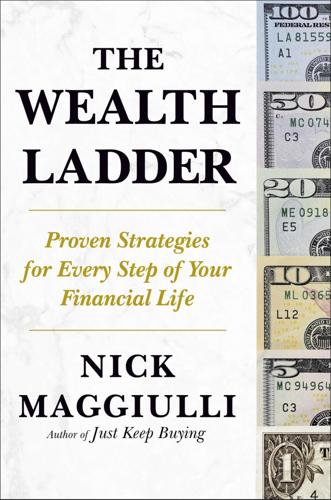
The Wealth Ladder: Proven Strategies for Every Step of Your Financial Life
by
Nick Maggiulli
Published 22 Jul 2025
BACK TO NOTE REFERENCE 2 Kartik Athreya, José Mustre-del-Río, and Juan M. Sánchez, “The Persistence of Financial Distress,” Review of Financial Studies 32, no. 10 (2019): 3851–83, https://doi.org/10.1093/rfs/hhz009. BACK TO NOTE REFERENCE 3 David U. Himmelstein et al., “Medical Bankruptcy: Still Common Despite the Affordable Care Act,” American Journal of Public Health 109, no. 3 (March 2019): 431–33, https://doi.org/10.2105/AJPH.2018.304901. BACK TO NOTE REFERENCE 4 Warren Buffett, “Warren Buffett, Lecture, Nebraska Educational Forum, 1999,” YouTube video, 59:39, Investor Archive, October 11, 1999, https://www.youtube.com/watch?
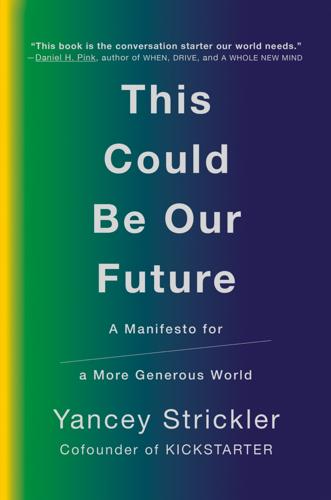
This Could Be Our Future: A Manifesto for a More Generous World
by
Yancey Strickler
Published 29 Oct 2019
how we think: Dan Ariely writes about our emotions’ effect on our choices in his 2008 book Predictably Irrational: The Hidden Forces That Shape Our Decisions. 62 percent of personal bankruptcies: 62 percent of American bankruptcies are caused by medical bills according to a 2009 report published in the American Journal of Medicine (“Medical Bankruptcy in the United States, 2007: Results of a National Study” by David U. Himmelstein, Deborah Thorne, Elizabeth Warren, and Steffie Woolhandler). reap growing profits: Examples of companies raising drug prices of existing drugs include the EpiPen, insulin (by three major manufacturers), and Daraprim.

MacroWikinomics: Rebooting Business and the World
by
Don Tapscott
and
Anthony D. Williams
Published 28 Sep 2010
Ken Terry, “Health Spending Hits 17.3 Percent of GDP In Largest Annual Jump,” B Net (February 4, 2010). 8. “Life Expectancy at Birth,” CIO World Factbook. See: https://www.cia.gov/library/publications/the-world-factbook/rankorder/2102rank.html. 9. D. U. Himmelstein, D. Thorne, E. Warren, et al., “Medical bankruptcy in the United States, 2007: Results of a national study,” The American Journal of Medicine (August 2009). 10. Karen Pallarito, “Government to Pay for More Than Half of U.S. Health Care Costs,” U.S. News (February 4, 2010). 11. Geoffrey Lean, “Water scarcity ‘now bigger threat than financial crisis,’” The Independent (March 15, 2009). 12.
…
“Health care spending in Canada to exceed $180 billion this year,” Canadian Institute for Health Information (November 19, 2009). 6. Robert Kelley, “Where Can $700 Billion In Waste Be Cut Annually From The U.S. Healthcare System?” Thomson Reuters (October 27, 2009). 7. D. Himmelstein, D. Thorne, E. Warren, et al., ”Medical bankruptcy in the United States, 2007: results of a national study,” American Journal of Medicine (August 2009). 8. J. Lubitz and G. Riley, “Trends in Medicare payments in the last year of life,” New England Journal of Medicine (April 1993). 9. Greg Keller, “US Tops World in Health Care Spending, Results Lag,” ABC News (December 8, 2009). 10.

A Generation of Sociopaths: How the Baby Boomers Betrayed America
by
Bruce Cannon Gibney
Published 7 Mar 2017
A large minority of bankruptcies come from catastrophic health-care costs, and some of these can (and, as an accounting matter, are) just written off as bad luck. Nevertheless, medical bankruptcies have their own sociopathic aspects, given the Boomers’ lackadaisical attitudes toward their own physical and financial health, and their failure to enact comprehensive insurance reform. And much of the dollar volume of bankruptcies derives from nonmedical imprudence. The Boomers made mistakes and crafted remedial laws in response; with their errors absolved, bankruptcy reform can trend toward the punitive, except, of course, in the case of medical bankruptcies, where we can expect the Boomers to indulge in more legislative forgiveness.
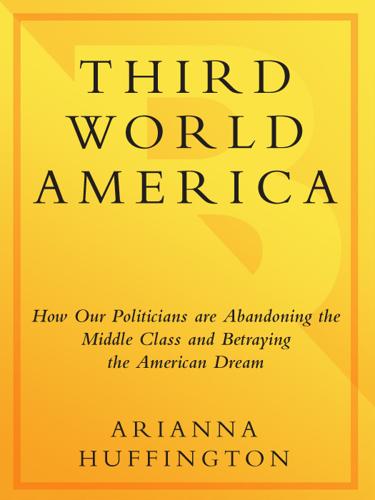
Third World America: How Our Politicians Are Abandoning the Middle Class and Betraying the American Dream
by
Arianna Huffington
Published 7 Sep 2010
Our elected leaders utterly ignored the fact that the vast majority of people who file for bankruptcy are middle-class folks who can’t pay their bills because they’ve lost their jobs or been hit with high medical bills. In fact, a 2009 study by researchers at Harvard and Ohio University showed that healthcare problems were the root cause of 62 percent of all personal bankruptcies in America in 2007.75 Using that rate, roughly 900,000 of 2009’s 1.4 million bankruptcy filings were medical bankruptcies.76 Or, to put it another way: Just over every thirty seconds someone in this country files for bankruptcy in the wake of a serious illness. How’s that for a shocking stat? Here’s another: 78 percent of the so-called medically bankrupt had health insurance at the time of their illness.77 It just wasn’t enough to cover the dramatic rise in health-care costs.

Private Island: Why Britain Now Belongs to Someone Else
by
James Meek
Published 18 Aug 2014
In his paper ‘Sick and (Still) Broke’, the lawyer Ryan Sugden points out that while the ACA puts a helpful cap on copayments, it doesn’t eliminate them, and does little to help people who have to quit work through their or a child’s illness. ‘While the Affordable Care Act will reduce the overall number of bankruptcies, and arguably eliminate the most morally objectionable causes of medical bankruptcy, in a system based on market principles there will – and must – be consumers whose own bad choices spell financial trouble,’ he writes. ‘For society to “win” and receive the benefits of a consumer-driven system, there must be some who “lose”.’ Latest figures from the OECD and the World Health Organisation suggest that the US spends 2.4 times more on health per person than Britain, yet Britons live slightly longer, on average, than Americans.
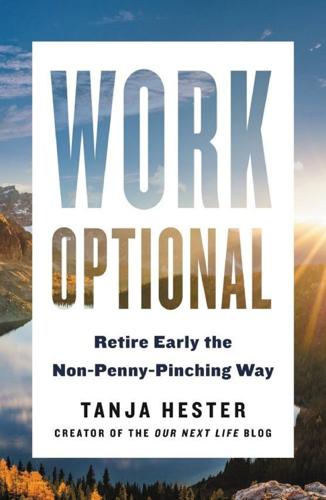
Work Optional: Retire Early the Non-Penny-Pinching Way
by
Tanja Hester
Published 12 Feb 2019
Maintain the Right Insurance While insurance is not a guarantee that you’ll never have large, out-of-pocket expenses, carrying the right insurance in early retirement will insulate you financially against some of the worst challenges. We’ve discussed at length the importance of maintaining excellent health insurance. According to Families USA, two-thirds of medical bankruptcies happen among people with health insurance—and that’s a stat that reflects the passage of the Affordable Care Act, when many more people are insured now. It’s a critical reminder not just to stay insured but also to keep yourself protected by solid insurance with good coverage levels and a reasonable out-of-pocket maximum that you could theoretically afford to pay every year.
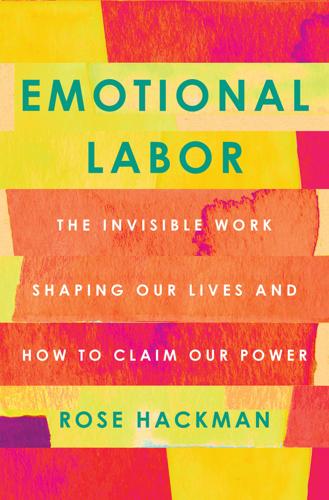
Emotional Labor: The Invisible Work Shaping Our Lives and How to Claim Our Power
by
Rose Hackman
Published 27 Mar 2023
“GDP (Current US$),” World Bank, accessed March 27, 2022, https://data.worldbank.org/indicator/NY.GDP.MKTP.CD; https://databank.worldbank.org/data/download/GDP.pdf. 4. Anshu Siripurapu, “The U.S. Inequality Debate,” Council on Foreign Relations, last updated April 20, 2022, accessed March 27, 2022, https://www.cfr.org/backgrounder/us-inequality-debate. 5. David U. Himmelstein et al., “Medical Bankruptcy: Still Common Despite the Affordable Care Act,” American Journal of Public Health 109, no. 3 (March 1, 2019): 431–33, https://doi.org/10.2105/AJPH.2018.304901. 6. Gina Martinez, “GoFundMe CEO: One-Third of Fundraisers Are for Medical Costs,” Time, updated January 30, 2019, accessed May 11, 2021, https://time.com/5516037/gofundme-medical-bills-one-third-ceo/. 7.

Forward: Notes on the Future of Our Democracy
by
Andrew Yang
Published 15 Nov 2021
Prescription drug use American Psychological Association, “Mental Health Issues Increased Significantly in Young Adults over Last Decade,” ScienceDaily, March 15, 2019. Deaths of despair Steven H. Woolf and Heidi Schoomaker, “Life Expectancy and Mortality Rates in the United States, 1959–2017,” JAMA, Nov. 26, 2019. Health-care costs have Julio C. Ramos et al., “Medical Bankruptcy: Still Common Despite the Affordable Care Act,” American Journal of Public Health 109, no. 3 (March 2019): 431–33. Here are some of the indicators Katherine Gehl and Michael Porter, The Politics Industry: How Political Innovation Can Break Partisan Gridlock and Save Our Democracy (Boston: Harvard Business Review Press, 2020), 81.

Poverty for Profit
by
Anne Kim
Doty, Roosa Tikkanen, Katharine Fields, and Reginald D. Williams II, Mirror, Mirror 2021: Reflecting Poorly; Health Care in the U.S. Compared to Other High-Income Countries (Washington, D.C.: The Commonwealth Fund, 2021). 24. David U. Himmelstein, Deborah Thorne, Elizabeth Warren, and Steffi Woolhandler, “Medical Bankruptcy in the United States, 2007: Results of a National Study,” American Journal of Medicine 122, no. 8 (August 2009); Scott Gottlieb, “Medical Bills Account for 40% of Bankruptcies,” BMJ 320, no. 7245 (May 13, 2000): 1295; Leo Lopez III, Louis H. Hart III, and Mitchell H. Katz, “Racial and Ethnic Health Disparities Related to COVID-19,” JAMA 325, no. 8 (2021): 719–20. 25.
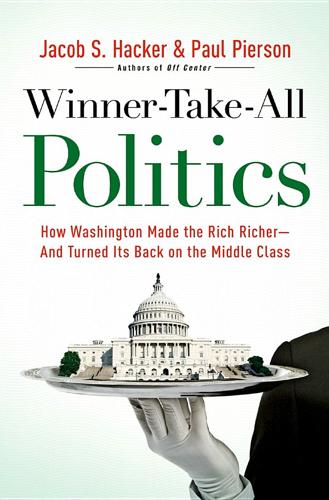
Winner-Take-All Politics: How Washington Made the Rich Richer-And Turned Its Back on the Middle Class
by
Paul Pierson
and
Jacob S. Hacker
Published 14 Sep 2010
Economic Mobility Initiative: An Initiative of the Pew Charitable Trusts (February 2008). 17 Wojciech Kopczuk, Emmanuel Saez, and Jae Song, “Uncovering the American Dream: Inequality and Mobility in Social Security Earnings Data Since 1937,” National Bureau of Economic Research (NBER) Working Paper No. 13345 (August 2007), 14, 40. 18 Miles Corak, “Chasing the Same Dream, Climbing Different Ladders: Economic Mobility in the United States and Canada,” Economic Mobility Initiative: An Initiative of the Pew Charitable Trusts (January 2009), 7. 19 See table 3.13: Change in Private Sector Employer-Provided Pension Coverage, 1979–2006 in Lawrence Mishel, Jared Bernstein, and Heidi Shierholz, The State of Working America 2008/2009 (Cornell: Cornell University Press, 2008). 20 Jack VanDerhei, Sarah Holden, and Luis Alonso, “401(k) Plan Asset Allocation, Account Balances, and Loan Activity in 2008,” Employee Benefit Research Institute No. 335 (October 2009): 16. 21 Alicia H. Munnell, Anthony Webb, and Francesca Golub-Sass, “The National Retirement Risk Index: After the Crash,” Center for Retirement Research at Boston College Brief No. 9–22 (October 2009). 22 David Himmelstein, Deborah Thorne, Elizabeth Warren, and Steffie Woolhandler, “Medical Bankruptcy in the United States, 2007: Results of a National Study,” American Journal of Medicine 122: 8 (2007): 741–746. 23 Organization for Economic Cooperation and Development, OECD Health Data 2009—Frequently Requested Data (November 2009), http://www.irdes.fr/EcoSante/DownLoad/OECDHealthData_FrequentlyRequestedData.xls. 24 Jacob S.

The Ones We've Been Waiting For: How a New Generation of Leaders Will Transform America
by
Charlotte Alter
Published 18 Feb 2020
If the president had held out for a public option, Eric knew, he likely would have walked away empty-handed. The Affordable Care Act was a huge win for the public: it prohibited insurance companies from applying lifetime caps on coverage or discriminating against people with preexisting conditions, which helped cut medical bankruptcies in half; greatly expanded Medicaid so millions more low-income people could get coverage; and allowed young people to stay on their parents’ health insurance until they were twenty-six (which was especially helpful to underemployed millennials for whom employer-sponsored health insurance seemed like an impossible luxury).
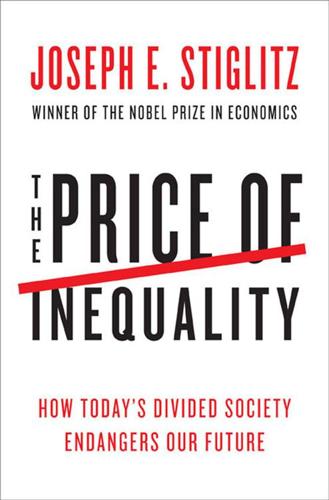
The Price of Inequality: How Today's Divided Society Endangers Our Future
by
Joseph E. Stiglitz
Published 10 Jun 2012
Furthermore, “most medical debtors were well educated, owned homes, and had middle-class occupations. Three quarters had health insurance. Using identical definitions, between 2001 and 2007, the share of bankruptcies attributable to medical problems rose by 49.6%.” D. Himmelstein, D. Thorne, E. Warren, and S. Woolhandler, “Medical Bankruptcy in the United States, 2007: Results of a National Study,” American Journal of Medicine 122, no. 8 (2009): 741–46. In terms of getting at a more causal measure, i.e., estimating the direct effect of a health shock on the decision of whether or not to declare bankruptcy, Gross and Notowidigdo find “that out-of-pocket medical costs are pivotal in roughly 26 percent of personal bankruptcies among low-income households.”
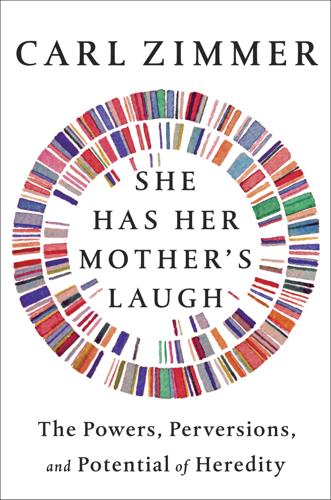
She Has Her Mother's Laugh
by
Carl Zimmer
Published 29 May 2018
They can pay for college test prep classes to increase the odds their children will get into good colleges. And if they do get in, their parents can cover more of their college tuitions. Poor parents have fewer means to prepare their children to get into college. Even if their children do get accepted, they have fewer funds, and they’re more vulnerable to layoffs or medical bankruptcy. Their children may graduate saddled with steep college debts or drop out before getting a degree. The gifts that children inherit can keep coming well into adulthood. Parents may help cover the cost of law school, or write a check to help out with a septic tank that failed just after their children bought their first house.